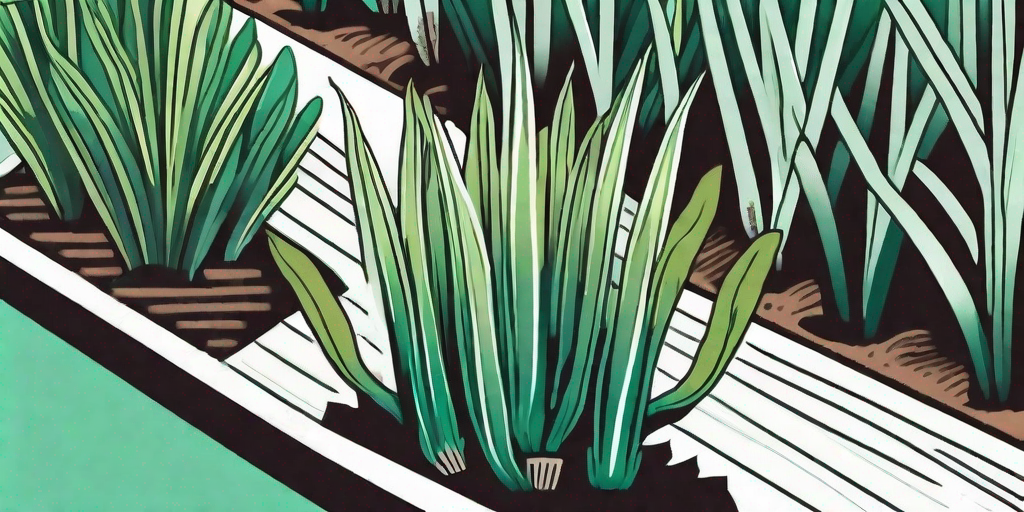
Leeks, those long, leafy cousins of the onion, are a culinary delight that can transform any dish into a gourmet masterpiece. But, like a fine wine or a well-aged cheese, the key to unlocking their full flavor potential lies in the timing of their harvest. So, if you're tired of playing the guessing game with your garden leeks, you're in the right place. Let's dive into the world of leeks and learn how to harvest them at the perfect time.
The Leek Lowdown
Before we get into the nitty-gritty of harvesting, let's take a moment to appreciate the leek. This humble vegetable, with its subtle onion-like flavor and creamy texture, has been a staple in kitchens around the world for centuries. It's versatile, nutritious, and, let's face it, a little bit quirky looking. But that's all part of its charm, right?
Leeks are a part of the Allium family, which also includes onions, garlic, and chives. They're hardy plants that can withstand colder temperatures, making them a great choice for gardeners in a variety of climates. But, while they're relatively easy to grow, knowing when and how to harvest them can be a bit of a challenge. And that's where this guide comes in.
Understanding the Leek Lifecycle
Understanding the lifecycle of a leek is key to knowing when it's ready to be harvested. Leeks are typically planted in the spring and are ready to harvest in the fall or early winter. However, the exact timing can vary depending on the specific variety of leek and the climate in which it's grown.
During the growing season, the leek will develop a long, white stem (known as the shank) and a bundle of flat, green leaves. The shank is the part of the leek that's most commonly used in cooking, while the leaves are often used to make stock or compost. As the leek matures, the shank will become thicker and the leaves will become more pronounced. This is a good sign that the leek is nearing its prime harvesting time.
Harvesting Leeks: A Step-by-Step Guide
Step 1: Check the Size
The first step in harvesting leeks is to check their size. A good rule of thumb is to harvest leeks when the shank is about 1 to 2 inches in diameter. However, size isn't everything. Some varieties of leeks are best harvested when they're smaller, while others can be left in the ground to grow larger. When in doubt, it's better to harvest a leek too early than too late. An overgrown leek can become woody and less flavorful.
Step 2: Loosen the Soil
Once you've determined that your leeks are ready to harvest, the next step is to loosen the soil around them. This can be done with a garden fork or a spade. Be careful not to damage the leek's shank or roots during this process. The goal is to make it easier to pull the leek out of the ground, not to dig it up entirely.
Step 3: Pull the Leek
With the soil loosened, you're ready to pull the leek. Grab it firmly by the base of the leaves and pull straight up. If the leek resists, try twisting it slightly as you pull. Once the leek is out of the ground, shake off any excess soil and trim the roots and leaves if desired.
Common Leek Harvesting Mistakes
Even with the best intentions, it's easy to make mistakes when harvesting leeks. One common mistake is pulling too hard on the leek, which can cause it to break. Another is waiting too long to harvest, which can result in a tough, woody leek. To avoid these pitfalls, always loosen the soil before pulling and keep a close eye on your leeks' growth throughout the season.
Another mistake is not making the most of your leek harvest. While the shank is the most commonly used part of the leek, the leaves can also be used in a variety of ways. They can be added to soups and stews for extra flavor, used to make a flavorful stock, or composted to enrich your garden soil. So don't toss those leaves!
FAQs
Can I leave leeks in the ground over winter?
Yes, leeks are hardy plants that can withstand frost and even snow. In fact, some gardeners swear that leeks taste better after a frost. However, if you live in a climate with harsh winters, it may be best to harvest your leeks before the ground freezes solid.
Can I harvest leeks at any size?
While leeks can technically be harvested at any size, they're usually most flavorful when the shank is 1 to 2 inches in diameter. However, some varieties of leeks are best harvested when they're smaller, while others can be left in the ground to grow larger.
What do I do with the green part of the leek?
The green leaves of the leek can be used in a variety of ways. They can be added to soups and stews for extra flavor, used to make a flavorful stock, or composted to enrich your garden soil.
Wrapping Up
Harvesting leeks at the perfect time is a bit of an art, but with a little knowledge and practice, anyone can master it. Remember, the key is to keep a close eye on your leeks throughout the growing season and to harvest them when the shank is about 1 to 2 inches in diameter. And don't forget to make the most of your harvest by using the leaves as well as the shank.
So there you have it, a foolproof guide to harvesting leeks at the perfect time. Now, go forth and savor the flavor of your homegrown leeks. Your taste buds will thank you!











